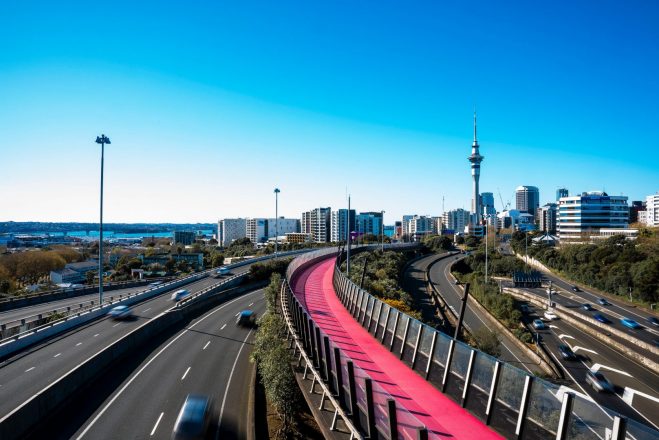オークランド市議会(地方自治体のこと。カウンシル)は、交通機関の排出量削減を目的とした計画を承認しました。
交通機関排出量削減計画(Transport Emissions Reduction Pathway)は、2030年までにオークランド市の交通機関の排出量を、64%削減するために必要なことを定めたものです。
この計画の主要なアクションは以下の通りです。
• 市内の自動車の30%を電気自動車に変更する(特に商用車)
•「アクティブトラベル」(徒歩や自転車での移動)を10倍に増やす
• 近隣の交通量を減らす
• 公共交通機関の利用を5倍に増やす
オークランド市長のフィル・ゴフ(Phil Goff)氏は、この計画は「非常に野心的」ではあるものの、達成可能だと述べました。
しかし、それにはオークランド市民の「賛同」が必要だと言います。
「この計画を実現するためには、みなさんのライフスタイルを変える覚悟が必要です。つまり、代替交通手段をより魅力的なものにするためのインセンティブを組み合わせることになりますが、一方で、渋滞料金(混雑緩和目的のための通行料)のような、明らかに影響を与える圧力もかかるでしょう」とゴフ氏は述べました。
市内の移動の約半分は6km未満、3分の1は2km未満だ、とゴフ氏。
このような短距離の移動なら、車ではなく、徒歩や自転車にすることが重要である、とのこと。
公共交通機関をより魅力的なものにすることも、この計画の成功の鍵になるでしょう。
交通機関による汚染は、この地域の排出量の40%以上を占めています。この計画で必要とされる投資は、既存の予算を再配分し、中央政府および地方自治体からの追加資金で賄われる予定です。




























































